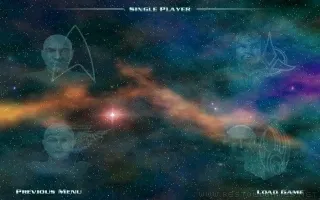
Not all of Armada II's gameplay additions are effective, even if they sound attractive. Armada II also adds more layers to the original game's resource model. By comparison, in the original Armada, battles took place on what was essentially a flat 2D playing field. New tactical options are available-ships can be set into a number of formations, and battles now play out in true 3D space. There's a new, linear campaign consisting of 30 single-player missions-10 for the Federation, 10 for the Klingons, and 10 for the Borg. New ships and technologies have been added to each of the returning factions.


In addition to the Federation, Klingon, Romulan, and Borg playable factions from the first game, Armada II also lets you play as the cruel Cardassians and the enigmatic yet decidedly hostile Species 8472, though these two are only available in the skirmish and multiplayer modes. On paper, Armada II sounds like a perfect sequel. In fact, if you enjoyed the original Armada, you might find yourself nostalgic for that game while playing Armada II.Īrmada II is the first product from Mad Doc Software, a company founded by one of the key individuals behind some of Activision's successful real-time strategy games, including Dark Reign, Battlezone, and the original Star Trek: Armada. Unfortunately, in practice not all of these new features are successful. However, a number of new complexities have been introduced in Armada II, which make it seem more compelling than the first game from a strategic standpoint. You can't tell just on first impression-the look and basic design of the game remain largely identical to its predecessor. Other sequels are more ambitious in nature, and Star Trek: Armada II is one of these. Some sequels simply expand on the concepts of the original game-they introduce new graphics and a few new features. The battles in Armada II are even larger-scale than in the first game.Īt any rate, there was certainly room for a good sequel. Some Star Trek fans felt its fairly simple gameplay didn't do justice to the source material, but most found Armada to be a refreshing change from the typically lackluster Star Trek games that had come before it. Still, Armada was paced well, had some tactical depth, and was essentially fun to play. The game wasn't overly complicated as real-time strategy games go-the object was to quickly try to gather enough resources to field a large fleet of starships powerful enough to dispose of all the enemy forces.

Released in early 2000, Star Trek: Armada was a well-built, graphically impressive real-time strategy game that let you command the famous ships of the Star Trek: The Next Generation television series.


 0 kommentar(er)
0 kommentar(er)
